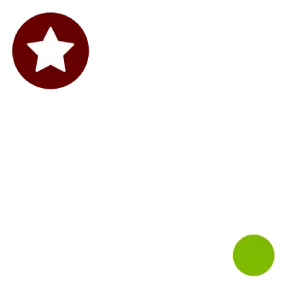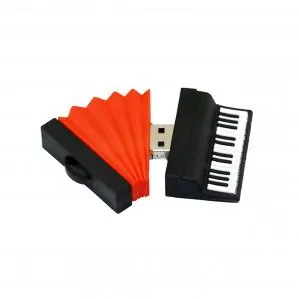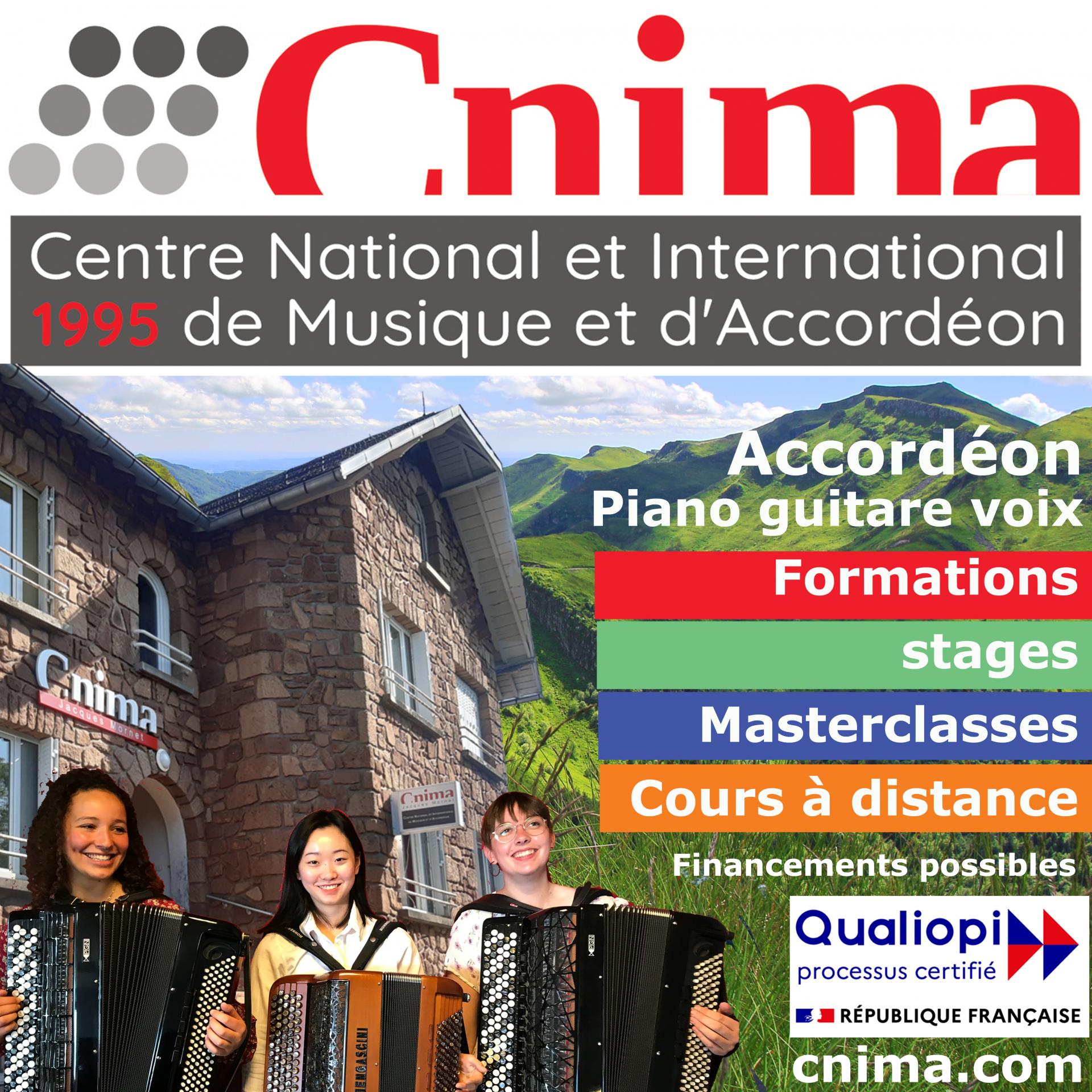Christelle de Franceschi broke the world record for the longest accordion concert on Saturday in Hergnies, northern France, playing for 80 hours 53 minutes and 28 seconds. The musician beat her own record, which she had held since 2022.
more here with video:
https://www.francetvinfo.fr/culture/musique/le-record-du-monde-du-concert-d-accordeon-le-plus-long-battu-dans-le-nord_6621480.html#xtor=RSS-3-[general]
more here with video:
https://www.francetvinfo.fr/culture/musique/le-record-du-monde-du-concert-d-accordeon-le-plus-long-battu-dans-le-nord_6621480.html#xtor=RSS-3-[general]
0
Reply
Hello to all!
I am looking for an accordion teacher who can give me advanced lessons. I have an intermediate level, regular concert practice in a band and a conservatory background as a pianist. I would like to improve my technique and specialize in Balkan music, jazz and tango.
For reasons of expatriation and covid I am looking for an online teacher (French or English). Do you have any good addresses, do you recommend individual lessons or pre-recorded video lessons?
Thank you in advance for your advice!
I am looking for an accordion teacher who can give me advanced lessons. I have an intermediate level, regular concert practice in a band and a conservatory background as a pianist. I would like to improve my technique and specialize in Balkan music, jazz and tango.
For reasons of expatriation and covid I am looking for an online teacher (French or English). Do you have any good addresses, do you recommend individual lessons or pre-recorded video lessons?
Thank you in advance for your advice!
2
Replies
slade
30/01/2021
Hello,
Someone posted an ad a while ago :)
https://www.partitions-accordeon.com/annonces/Accordion+Online+Academy%2C+FREE+Trial+Lesson
Someone posted an ad a while ago :)
https://www.partitions-accordeon.com/annonces/Accordion+Online+Academy%2C+FREE+Trial+Lesson
pontiac
06/02/2021
Hello Alouette,
You have Arrigo Tomasi who may be able to help you:
https://arrigotomasi.com/fr/index.asp
Friendly
You have Arrigo Tomasi who may be able to help you:
https://arrigotomasi.com/fr/index.asp
Friendly
Good evening to all of you,
I've been trying in vain for several weeks to find enlightened advice to connect my MENGASCINI accordion equipped with the MusicTech MIDI system with a KORG PA4X keyboard.
I can't get them to communicate with each other.
I didn't find any book about this subject. I surfed in vain to find various tutorials. If the connection with a ROLAND Bk7M expander is very easy, it seems that the connection with a KORG arranger is much more difficult.
If you can help me, I will be very grateful. Good evening and good weekend to all.
Musically yours
I've been trying in vain for several weeks to find enlightened advice to connect my MENGASCINI accordion equipped with the MusicTech MIDI system with a KORG PA4X keyboard.
I can't get them to communicate with each other.
I didn't find any book about this subject. I surfed in vain to find various tutorials. If the connection with a ROLAND Bk7M expander is very easy, it seems that the connection with a KORG arranger is much more difficult.
If you can help me, I will be very grateful. Good evening and good weekend to all.
Musically yours
2
Replies
yoyodu77
14/03/2020
Hello
I don't know either of the two equipments, but on the other hand for what concerns the MIDI, I think I can add my grain of salt.
To connect two materials in Midi it is rather simple if one has the good cables...the midi OUT of the one goes in the Midi IN of the other
and the Midi OUT of the other one goes into the Midi of the first one .
After, it is there that that is complicated a little...
Because there must be a material which is the MASTER and the other which is the SLAVE.
Because if they are both ... at the same level MASTER and MASTER nothing passes from one to the other ...
and SLAVE SLAVE is the same ...
All this program from the machines ...
This is what could perhaps advance the chimilibilick
Lionel
I don't know either of the two equipments, but on the other hand for what concerns the MIDI, I think I can add my grain of salt.
To connect two materials in Midi it is rather simple if one has the good cables...the midi OUT of the one goes in the Midi IN of the other
and the Midi OUT of the other one goes into the Midi of the first one .
After, it is there that that is complicated a little...
Because there must be a material which is the MASTER and the other which is the SLAVE.
Because if they are both ... at the same level MASTER and MASTER nothing passes from one to the other ...
and SLAVE SLAVE is the same ...
All this program from the machines ...
This is what could perhaps advance the chimilibilick
Lionel
JJMAU
15/03/2020
Hello Lionel,
Thank you for your thoughts.
Have a nice Sunday
Jean-Jacques
Thank you for your thoughts.
Have a nice Sunday
Jean-Jacques
Hello, I am forwarding a message from an accordionist
Pamphile Chambon13 May, 19:21Sometimes life is great! And sometimes it's rotten as hell. I had my accordion stolen at yesterday's concert, and I'm feeling blue without my instrument to play it. If you ever see by chance a bugari 180 S PC ... sold on the bon coin, ebay or elsewhere, please let me know! If it is mine...
thank you to share around youcordiallyanne
Pamphile Chambon13 May, 19:21Sometimes life is great! And sometimes it's rotten as hell. I had my accordion stolen at yesterday's concert, and I'm feeling blue without my instrument to play it. If you ever see by chance a bugari 180 S PC ... sold on the bon coin, ebay or elsewhere, please let me know! If it is mine...
thank you to share around youcordiallyanne
0
Reply
Hello to all of you ; and thank you in advance for helping me, concerning an accordion that I have just acquired. Offered on the boncoin, I liked this accordion, I went on youtube, or with luck it was in video. Seduced by its organic tone and its registers, I offered it to myself. 230 euros and all the notes are right, it is like new. But it was my surprise when the practice of its range. I found on the internet I put on tuto his keyboard. For me it's all new and I have to question myself. Would there be a person who can tell me where I can find a method for his practice ?????? Thank you all for your kindness.
2
Replies
MARCEAU
09/12/2016
I thank you Cindou, I expected no less from you. You know how to get involved in sharing and enlighten us on certain subjects. So I watched this very instructive report and another address that leads me to a method that is not in French. But this allowed me to see the side of Alain Aboot and, this, thanks to julienjc. It goes without saying that I have researched before creating this discussion. And I will continue by contacting Parisian editions. Our site being poor concerning this accordion, I will work to bring a maximum concerning its practice and join to our site any useful document. Thanks to you and to julienjc .
MARCEAU
14/12/2016
I thank you for your help Cindou. I saw with specialist in the matter, it is in fact a Russian keyboard said (Bayan) but the incredible fact is that the left hand keyboard does not have a trigger for chromatic bass. Finally, I succeeded with an accordionist playing routine, to exchange it against his own which has our good old Italian keyboard. I warn against some false information on leboncoin, because often they are accordions recovered for profit. In short, I am really lucky in my misfortune.
Hi musicians
I am looking for pedagogical methods to know my new Fratelli Crosio concert accordion 4 rows right hand identical to the left hand
I think the "Complete classical accordion method" by Alain Abbott will do the trick
Other ideas will be welcome
If possible a PDF file
Thanks in advance
Sincerely
Julienjc
I am looking for pedagogical methods to know my new Fratelli Crosio concert accordion 4 rows right hand identical to the left hand
I think the "Complete classical accordion method" by Alain Abbott will do the trick
Other ideas will be welcome
If possible a PDF file
Thanks in advance
Sincerely
Julienjc
3
Replies
pontiac
29/04/2016
Hello julienjc,
Your Fratelli is therefore a harmoneon, there is a method of Mr. Monichon, Pierre, but it is not common to find.
For your information it is this one:
http://www.libreriamozart.com/methode-harmoneon-accordeon-concert-p-20268.html
Musically
Your Fratelli is therefore a harmoneon, there is a method of Mr. Monichon, Pierre, but it is not common to find.
For your information it is this one:
http://www.libreriamozart.com/methode-harmoneon-accordeon-concert-p-20268.html
Musically
julienjc
01/05/2016
thank you pontiac for your tips
It's not easy to find methods to
our instruments
Sincerely
julienjc
It's not easy to find methods to
our instruments
Sincerely
julienjc
Unknown
02/05/2016
Thank you for this very touching video that I am eager to share
hi nice accordionists
I own a Fratelli- Crosio chromatic accordion 3 rows right hand and the C is on the 4th button first row
I just bought a Fratelli- Crosio chromatic accordion 4 rows right hand = left hand
(harmonion)
I have the idea that the C starts at the 3rd button first row
Who can confirm it to me?
thanks in advance
I own a Fratelli- Crosio chromatic accordion 3 rows right hand and the C is on the 4th button first row
I just bought a Fratelli- Crosio chromatic accordion 4 rows right hand = left hand
(harmonion)
I have the idea that the C starts at the 3rd button first row
Who can confirm it to me?
thanks in advance
1
Reply
julienjc
22/04/2016
Thanks Cindou11
I went through your data
I deduce that the C starts on the first row first button
To be corrected if there is an error in interpretation
I'll try to get the Abbott A method from P-A
"Complete method of classical accordion"
Thanks for your light
I went through your data
I deduce that the C starts on the first row first button
To be corrected if there is an error in interpretation
I'll try to get the Abbott A method from P-A
"Complete method of classical accordion"
Thanks for your light
Hi to all
I'm looking for an adapted method for my Fratelli Crosio Chromatic
concert accordion 4 rows left and right hand
Thanks in advance
I'm looking for an adapted method for my Fratelli Crosio Chromatic
concert accordion 4 rows left and right hand
Thanks in advance
0
Reply
Hello to all would there be people who would have information on this accordionist precursor of the accordion. it had a school of accordion in Paris Apart from these small information that I found. Thank you in advance
http://www.leboncoin.fr/instruments_de_musique/760754944.htm?ca=7_s
http://www.marcelazzola.com/index_galerie_show_moderne.php?id=76
http://gypsyjazz.net/products/musette-swing-paris-1925-1942-by-accordeon-anthologie/
Morceaux number 16 the bullfight
Diamantina : valse-boston : [piano] / musique de Castio Arenás [i.e. Arena's] ; [ill. par] Nat
Castio Arenas - Concert Star / In The Studios (Shellac) at Discogs
http://www.ebay.fr/itm/Partition-Valse-Endiablee-Castio-Arenas-Derossi-accordeon-/360954287344
https://www.google.fr/webhp?sourceid=chrome-instant&rlz=1C1AVNC_enFR566FR566&ion=1&espv=2&ie=UTF-8#q=castio+arena%27s+
http://www.leboncoin.fr/instruments_de_musique/760754944.htm?ca=7_s
http://www.marcelazzola.com/index_galerie_show_moderne.php?id=76
http://gypsyjazz.net/products/musette-swing-paris-1925-1942-by-accordeon-anthologie/
Morceaux number 16 the bullfight
Diamantina : valse-boston : [piano] / musique de Castio Arenás [i.e. Arena's] ; [ill. par] Nat
Castio Arenas - Concert Star / In The Studios (Shellac) at Discogs
http://www.ebay.fr/itm/Partition-Valse-Endiablee-Castio-Arenas-Derossi-accordeon-/360954287344
https://www.google.fr/webhp?sourceid=chrome-instant&rlz=1C1AVNC_enFR566FR566&ion=1&espv=2&ie=UTF-8#q=castio+arena%27s+
0
Reply
HELLO MUSICIAN FRIENDS
Tony Muréna has recorded a lot, especially in his last period when, like many others, he devoted himself to the interpretation of variety songs or fashionable tunes. It was necessary to forget everything that recalled the war and therefore also the music of that period; in short, the swing era was over. We have privileged here this golden age of swing musette: that is to say the years 1939-1947, plus some later titles where Muréna still has beautiful accents. If many of these songs have already been re-released on CD, they were most often scattered on various compilations, most of the time mixed with typical or commercial songs, without any indication of date or personnel, and in these times where one product drives out the other, most of these discs are not available anymore (1). Here is for the first time in 3 CDs, and in chronological order, almost all of Tony Muréna's best tracks, (with precise references and indication of personnel when identified), showing his immense talent. THE BEGINNINGS Born in Italy in 1916, Antonio Muréna did not know his father, who died on the field of honor (fallen on the Chemin des Dames). Like many Italians, he arrived in France with his mother, who remarried in 1923 to a fellow countryman, shortly after the First World War. They settled in Nogent-sur-Marne and then in Joinville. An uncle gave his first accordion to the young Tony, who showed a serious aptitude for music and studied with passion and persistence. The autodidact benefits from the advice of the great Médard Ferrero. At the age of twelve, he already performed at his first balls. Then, launched by his cousin Louis Ferrari (1910-1988), also an accordionist, he started in cabarets and guinguettes. He lost his mother and then his stepfather and found himself alone with his sister and three half-sisters. To make boil the pot he puts the double bites, puts himself in the bandoneon and quickly integrates the best orchestras of tango (Rafael Canaro, Eduardo Bianco...). We are in 1932, Muréna is only 16 years old ! His quintet is sufficiently famous to be part of the replacements of the holder of the Balajo. Having to go on tour, Muréna proposes to Jo Privat to replace him at the Balajo; the latter will remain there 50 years! Muréna plays at La Silhouette, La Boule noire, La Java, Le Pré Catelan, Ciro's... The guitarists Didi Duprat, Lucien Gallopin, one or the other of the Ferré, are then its accompanists. SWING MUSETTE It is in France that the first full-fledged jazz accordion develops. Roger Etlens is said to have been one of the first to play jazz on the accordion, followed by Louis Richardet and Charley Bazin. But these precursors did not record much and it is Viseur who will be the first great jazz accordionist, followed immediately by Muréna. In the absence of the American models, who left for the United States after the declaration of war, the pioneers of the French swing accordion developed a style mixing American jazz, French musette and gypsy swing. Viseur, Muréna, and then Jo Privat, renovated the musette genre in depth by eliminating the accordion's vibrating register, introducing more sophisticated harmonies, and embarking on the adventure of what is called im-provisation. According to Mrs. Muréna's testimony (2), whenever they had a moment, Gus (Viseur) and Tony (Muréna) would play together just for them. We have a glimpse of what this could give, with about ten titles recorded around 1948 by the two companions (Matelo Ferret would be on guitar and the double bass player is not identified). These recordings, not very well known, were released under the name of Accordion's Club (cf. here "?Home Trainer?", the magnificent version of "?Body and Soul?", the super acceleration of tempo on "?On The Sunny Side of The Street?" which swings to death, and "?After You've Gone?) They will also play with the whole team of the Hot Club de France, where Muréna joins in 1941, and meet in boeufs, after the concerts, and more regularly thereafter at the Mirliton, a dance hall that Muréna buys in 1949 on the side of the place Clichy, and where all the accordionists come, at least those who like the beautiful chords. Still according to Mrs Muréna, Django and Tony liked to play together... What a pity that no sound trace has reached us! "... We were in Les Sables d'Olonne when Tony learned that Django had died. Tony collapsed. That's the only time I saw my husband cry..." (3) MURÉNA, VEDETTE DES DISQUES ODÉON In 1939, shortly before the declaration of war, Tony met Emile Prud'homme (who was to become his brother-in-law), who had just recorded for the prestigious Odéon record label. He introduced Tony to the artistic director of the label, Edouard Dory, who was truly enthusiastic about his sparkling playing. On May 11, 1939, two swings are recorded, "?Madam's?" co-composed by Muréna with P. Fontaine and "?all is not lost?", a light swing by Louis Richardet. Jacques Petitsigne is on double bass, Matelo and Sarane on guitars, the latter illustrating himself by two remarkably constructed choruses and of course Tony on accordion, who combines in his phrasing beautiful and elegant. From the beginning of the 1940s, Muréna gave a new dimension to the accordion, surrounding himself with the best jazz musicians of the time: the drummers Georges Marion, Jacques Irsa, Roger Paraboschi, Pierre Fouad, the double bassists Jean Merlin, Jacques Petitsigne, René Larguier or Pascal Groffe, the clarinettists Pierre Gossez, Francis Camus, Lucas, Pierre Delhoumeau or Hubert Rostaing, the pianists Michel Ramos or Boris Sarbek, the guitarists Didi Duprat, René Duchaussoir, Lucien Gallopin... Between 1939 and 1943, Muréna drew largely from the gypsy source and more exactly from the gypsy source, by joining, just like Viseur (and a little later Privat) the talents of the Ferret brothers: Baro, Matelo and Sarane. In 1941, Tony becomes the star of the Odeon records and puts 22 titles in the can that year; the accordionist has perhaps never played so brilliantly. If his style is less fiery, less flamboyant than Viseur's, his touch is more sentimental and airy (cf. "?Le paradis perdu?", a magnificent ballad where Muréna combines finesse and feeling, this beautiful version of "?Yeux noirs?" with a long guitar chorus probably by Sarane, or these nervous swings like "?Le jitterbug?", "?Playmates?", "?Express 113?"or "China Town", an "American" jazz theme that the needs of the French production will rename "Chinatown", the opportunity for Muréna to launch some beautiful rockets), these last titles almost all interpreted with a septet with a very Goodmanian spirit: piano, drums and clarinet (excellent chorus of Pierre Delhoumeau). The accordionist treats the instrument like a real orchestra, taking advantage of all its resources: finesse of play, phrasing of a rare elegance, sense of exposition of a theme, constant inspiration. Stylist as there are few, he is never in the clichés: originality, spirit of creation and freshness are at the appointment. For Marcel Azzola, "?when Tony plays, we forget that it is the accordion, he is an authentic genius? Muréna is also the author of some fabulous compositions such as "Swing promenade", "Pacific" (a kind of blues that starts a bit like Django Reinhardt's "Rythm Futur", with an acceleration of the tempo illuminated by a sparkling guitar chorus, probably due to Baro Ferret, and rockets sent by Tony), "Ciro's", on which his suppleness and relaxed phrasing are marvellous, "Milk Bar", one of his most famous swings."one of his most accomplished swings or "?Pré catelan?", a swing recorded on May 30, 1942, a day when grace was undoubtedly upon him, since he also recorded "?Indifference? and "?Passion?", two masterpieces of great melodic beauty, co-composed with Joseph Colombo, charged with sensitivity and emotion, illuminated by Baro's chorus and which have not ceased to be played and replayed since. Muréna is thus, with Viseur and Privat, the singer of the waltz in minor which, imbued with a certain spleen, imposes itself as the masterpiece of jazz musette. MYSTERY AND GUMDROP !
Tony Muréna has recorded a lot, especially in his last period when, like many others, he devoted himself to the interpretation of variety songs or fashionable tunes. It was necessary to forget everything that recalled the war and therefore also the music of that period; in short, the swing era was over. We have privileged here this golden age of swing musette: that is to say the years 1939-1947, plus some later titles where Muréna still has beautiful accents. If many of these songs have already been re-released on CD, they were most often scattered on various compilations, most of the time mixed with typical or commercial songs, without any indication of date or personnel, and in these times where one product drives out the other, most of these discs are not available anymore (1). Here is for the first time in 3 CDs, and in chronological order, almost all of Tony Muréna's best tracks, (with precise references and indication of personnel when identified), showing his immense talent. THE BEGINNINGS Born in Italy in 1916, Antonio Muréna did not know his father, who died on the field of honor (fallen on the Chemin des Dames). Like many Italians, he arrived in France with his mother, who remarried in 1923 to a fellow countryman, shortly after the First World War. They settled in Nogent-sur-Marne and then in Joinville. An uncle gave his first accordion to the young Tony, who showed a serious aptitude for music and studied with passion and persistence. The autodidact benefits from the advice of the great Médard Ferrero. At the age of twelve, he already performed at his first balls. Then, launched by his cousin Louis Ferrari (1910-1988), also an accordionist, he started in cabarets and guinguettes. He lost his mother and then his stepfather and found himself alone with his sister and three half-sisters. To make boil the pot he puts the double bites, puts himself in the bandoneon and quickly integrates the best orchestras of tango (Rafael Canaro, Eduardo Bianco...). We are in 1932, Muréna is only 16 years old ! His quintet is sufficiently famous to be part of the replacements of the holder of the Balajo. Having to go on tour, Muréna proposes to Jo Privat to replace him at the Balajo; the latter will remain there 50 years! Muréna plays at La Silhouette, La Boule noire, La Java, Le Pré Catelan, Ciro's... The guitarists Didi Duprat, Lucien Gallopin, one or the other of the Ferré, are then its accompanists. SWING MUSETTE It is in France that the first full-fledged jazz accordion develops. Roger Etlens is said to have been one of the first to play jazz on the accordion, followed by Louis Richardet and Charley Bazin. But these precursors did not record much and it is Viseur who will be the first great jazz accordionist, followed immediately by Muréna. In the absence of the American models, who left for the United States after the declaration of war, the pioneers of the French swing accordion developed a style mixing American jazz, French musette and gypsy swing. Viseur, Muréna, and then Jo Privat, renovated the musette genre in depth by eliminating the accordion's vibrating register, introducing more sophisticated harmonies, and embarking on the adventure of what is called im-provisation. According to Mrs. Muréna's testimony (2), whenever they had a moment, Gus (Viseur) and Tony (Muréna) would play together just for them. We have a glimpse of what this could give, with about ten titles recorded around 1948 by the two companions (Matelo Ferret would be on guitar and the double bass player is not identified). These recordings, not very well known, were released under the name of Accordion's Club (cf. here "?Home Trainer?", the magnificent version of "?Body and Soul?", the super acceleration of tempo on "?On The Sunny Side of The Street?" which swings to death, and "?After You've Gone?) They will also play with the whole team of the Hot Club de France, where Muréna joins in 1941, and meet in boeufs, after the concerts, and more regularly thereafter at the Mirliton, a dance hall that Muréna buys in 1949 on the side of the place Clichy, and where all the accordionists come, at least those who like the beautiful chords. Still according to Mrs Muréna, Django and Tony liked to play together... What a pity that no sound trace has reached us! "... We were in Les Sables d'Olonne when Tony learned that Django had died. Tony collapsed. That's the only time I saw my husband cry..." (3) MURÉNA, VEDETTE DES DISQUES ODÉON In 1939, shortly before the declaration of war, Tony met Emile Prud'homme (who was to become his brother-in-law), who had just recorded for the prestigious Odéon record label. He introduced Tony to the artistic director of the label, Edouard Dory, who was truly enthusiastic about his sparkling playing. On May 11, 1939, two swings are recorded, "?Madam's?" co-composed by Muréna with P. Fontaine and "?all is not lost?", a light swing by Louis Richardet. Jacques Petitsigne is on double bass, Matelo and Sarane on guitars, the latter illustrating himself by two remarkably constructed choruses and of course Tony on accordion, who combines in his phrasing beautiful and elegant. From the beginning of the 1940s, Muréna gave a new dimension to the accordion, surrounding himself with the best jazz musicians of the time: the drummers Georges Marion, Jacques Irsa, Roger Paraboschi, Pierre Fouad, the double bassists Jean Merlin, Jacques Petitsigne, René Larguier or Pascal Groffe, the clarinettists Pierre Gossez, Francis Camus, Lucas, Pierre Delhoumeau or Hubert Rostaing, the pianists Michel Ramos or Boris Sarbek, the guitarists Didi Duprat, René Duchaussoir, Lucien Gallopin... Between 1939 and 1943, Muréna drew largely from the gypsy source and more exactly from the gypsy source, by joining, just like Viseur (and a little later Privat) the talents of the Ferret brothers: Baro, Matelo and Sarane. In 1941, Tony becomes the star of the Odeon records and puts 22 titles in the can that year; the accordionist has perhaps never played so brilliantly. If his style is less fiery, less flamboyant than Viseur's, his touch is more sentimental and airy (cf. "?Le paradis perdu?", a magnificent ballad where Muréna combines finesse and feeling, this beautiful version of "?Yeux noirs?" with a long guitar chorus probably by Sarane, or these nervous swings like "?Le jitterbug?", "?Playmates?", "?Express 113?"or "China Town", an "American" jazz theme that the needs of the French production will rename "Chinatown", the opportunity for Muréna to launch some beautiful rockets), these last titles almost all interpreted with a septet with a very Goodmanian spirit: piano, drums and clarinet (excellent chorus of Pierre Delhoumeau). The accordionist treats the instrument like a real orchestra, taking advantage of all its resources: finesse of play, phrasing of a rare elegance, sense of exposition of a theme, constant inspiration. Stylist as there are few, he is never in the clichés: originality, spirit of creation and freshness are at the appointment. For Marcel Azzola, "?when Tony plays, we forget that it is the accordion, he is an authentic genius? Muréna is also the author of some fabulous compositions such as "Swing promenade", "Pacific" (a kind of blues that starts a bit like Django Reinhardt's "Rythm Futur", with an acceleration of the tempo illuminated by a sparkling guitar chorus, probably due to Baro Ferret, and rockets sent by Tony), "Ciro's", on which his suppleness and relaxed phrasing are marvellous, "Milk Bar", one of his most famous swings."one of his most accomplished swings or "?Pré catelan?", a swing recorded on May 30, 1942, a day when grace was undoubtedly upon him, since he also recorded "?Indifference? and "?Passion?", two masterpieces of great melodic beauty, co-composed with Joseph Colombo, charged with sensitivity and emotion, illuminated by Baro's chorus and which have not ceased to be played and replayed since. Muréna is thus, with Viseur and Privat, the singer of the waltz in minor which, imbued with a certain spleen, imposes itself as the masterpiece of jazz musette. MYSTERY AND GUMDROP !
0
Reply


































